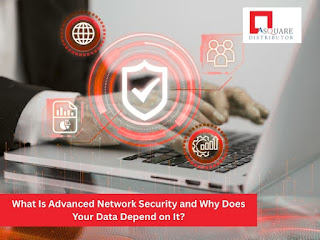Key Features to Look for in a Reliable Networking System
In today's digitally driven business landscape, a reliable networking system is no longer a luxury—it is an absolute necessity. Whether you are a small business owner, a large enterprise, or an organization that relies on seamless communication and data transfer, investing in a robust networking solution can significantly impact your operations. The right network ensures security, speed, scalability, and uninterrupted performance.
In this blog, we will explore the key features to look for in a reliable networking system, helping businesses make informed decisions when selecting or upgrading their IT infrastructure.
1. High Network Uptime and Reliability
One of the most critical features of any networking system is high uptime. Downtime can disrupt operations, impact customer service, and result in lost revenue. Look for systems that offer:
-
Redundant connections to avoid single points of failure
-
Automatic failover mechanisms in case of hardware or software faults
-
Service Level Agreements (SLAs) guaranteeing 99.9%+ uptime
Why it matters: Network outages can lead to data loss and interrupted workflows, especially for businesses relying on cloud services or remote access.
2. Scalability and Flexibility
Your business is not static—and your network shouldn’t be either. A reliable networking system must scale as your business grows.
-
Modular network design allows easy integration of new devices or services
-
Virtual LANs (VLANs) support segmentation as teams expand
-
Cloud-managed networking makes it easy to scale across locations
Pro Tip: Opt for networking solutions that allow for flexible expansion without the need for a complete overhaul.
3. Security Features and Threat Prevention
Cybersecurity threats are constantly evolving. A reliable networking system should come with advanced built-in security protocols to protect sensitive data and prevent unauthorized access.
Key security features include:
-
Firewall integration
-
Intrusion Detection and Prevention Systems (IDPS)
-
VPN support for remote access
-
End-to-end encryption
-
Role-based access control (RBAC)
Why it matters: A single breach can compromise customer data, intellectual property, and your brand’s reputation.
4. Speed and Bandwidth Management
A fast, lag-free network is crucial for business efficiency. Whether you’re hosting video conferences, transferring large files, or using cloud-based applications, speed is essential.
-
Gigabit or multi-gigabit speeds
-
Bandwidth throttling and QoS (Quality of Service) settings to prioritize critical traffic
-
Load balancing for optimized performance
Did you know? Slow network performance is one of the top complaints from employees in organizations using outdated networking systems.
5. Centralized Network Management
Modern businesses often operate from multiple locations or support remote teams. A centralized network management system simplifies monitoring and maintenance.
Look for:
-
Cloud-based control panels
-
Real-time network analytics
-
Remote troubleshooting tools
-
Centralized firmware updates
Why it's important: It reduces IT overhead, enables proactive issue resolution, and enhances visibility across all network layers.
6. Device Compatibility and Integration
A reliable network must seamlessly support a wide range of devices, including:
-
Laptops, desktops, mobile devices
-
VoIP phones and printers
-
Smart devices and IoT integrations
Choose networking hardware and software that is compatible with your existing ecosystem—both current and planned.
Tip: Go for solutions that support common standards like Wi-Fi 6, IPv6, and IEEE 802.3 for future-proofing.
7. Wireless Connectivity and Coverage
As mobility becomes essential in workplaces, a dependable wireless networking system is crucial.
-
Wide-area coverage with access points
-
Seamless handover between APs (roaming)
-
Wireless mesh support
-
Guest network setup with access control
Why it matters: Poor Wi-Fi performance can negatively impact productivity and client satisfaction.
8. Redundancy and Backup Options
A redundant networking system ensures that even if one component fails, the rest of the network continues to function.
-
Redundant power supplies and connections
-
Backup internet solutions (e.g., LTE failover)
-
Dual routers or switches for fail-safe operation
Pro Insight: Redundancy minimizes disruptions and allows IT teams time to fix issues without halting operations.
9. Traffic Monitoring and Reporting Tools
Visibility into your network is key for performance optimization and security auditing.
Ensure your networking system offers:
-
Network monitoring dashboards
-
Bandwidth usage reports
-
Threat and activity logs
-
Performance analytics
These features help in diagnosing slowdowns, tracking usage trends, and enforcing security policies.
10. Vendor Support and Firmware Updates
A reliable networking system is backed by strong vendor support and frequent firmware upgrades.
-
24/7 customer service
-
Knowledge base and documentation
-
Regular security patches and software updates
Why it matters: Unpatched systems can become targets for cyberattacks and performance issues.
11. Cost-Effectiveness and ROI
The best networking system offers value for money without compromising on essential features.
Consider:
-
Total Cost of Ownership (TCO) including setup, maintenance, and upgrades
-
Energy efficiency
-
Long-term scalability
Expert Tip: Cheaper isn’t always better. Balance cost with performance, support, and scalability for a long-term ROI.
Conclusion
A reliable networking system is foundational to business continuity, cybersecurity, and operational efficiency. From uptime and security to scalability and centralized management, the right solution addresses both your current needs and future goals.



Comments
Post a Comment